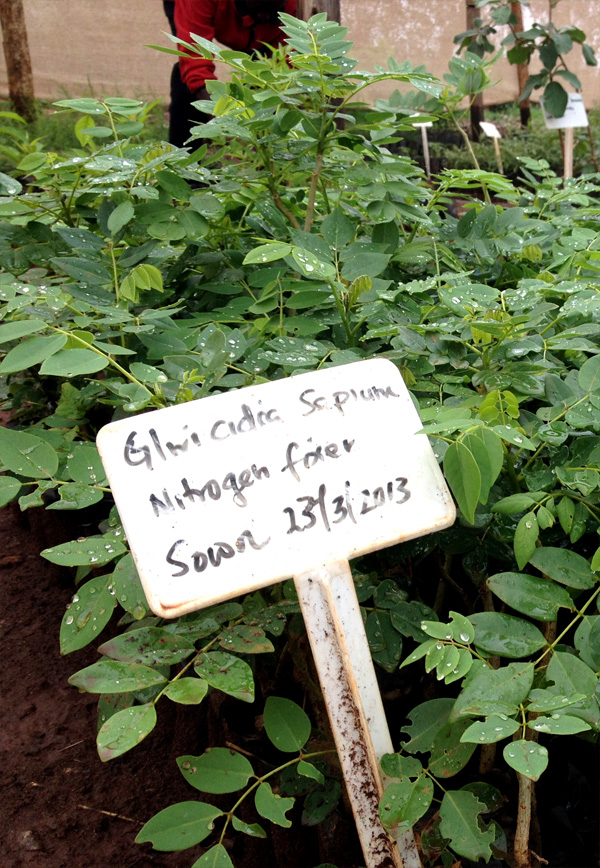EverGreen Agriculture integrates trees with food crops and livestock to create more sustainable and productive agricultural systems for small holder farming families.
The EverGreen Agriculture Equation
TREES
+
LOCAL CONDITIONS
=
FIVE F’s
of EverGreen Agriculture
Fuel
Over 80 percent of rural population uses fuelwood as a source of energy from which more than 11% is contributed by trees in an improved fallow that provide farmers with firewood supply after a short timeFertilizer
Fertilizer trees can potentially add up to 200 kg N per hectare annually. This is approximately equivalent to about 476 kg Urea in every hectare annuallyFood
Fertilizer trees in intercropping system with maize can potentially increase yield in the range of 26% to 400% per season as was observed in MalawiFiber
Over 90% of timber used by farmers comes from crop fields which is indicative of how farmers value treesFodder
500 Calliandra trees per hectare can feed 1 cow throughout the year with only 3kg of fresh forage and 2kg of dry forage giving similar milk yield as 1kg dairy mealForms of EverGreen Agriculture in the Country & Partner Network
The principles of EverGreen Agriculture have already been widely applied in Africa. Currently, 17 countries are now engaged in EverGreen Agriculture including:

Zambia
In Zambia, more than 160,000 farmers now grow food crops under Faidherbia trees. Agroforestry helps farmers purchase necessary daily commodities and clothing, and use additional money earned from increased crop yield to pay their children’s school fees, attend to health care for their family members and to buy higher value foods like meat and fish (Keil, 2001; Schuller et al., 2005)
Niger
In Niger, approximately 4.8 million hectares of landscapes have been re-greened, many with Faidherbia and other trees which improve soil fertility.
Kenya
In Western Kenya, 70% of farmers who took up agroforestry practices benefited from environmental sustainability, primarily soil erosion control. Households that had been involved in an agroforestry project for four years averaged 24,000 Ksh (~US$300) more in household wealth than their neighbors.
Malawi
Trials in Malawi and Zambia revealed rain use efficiency increases of up to 380% where maize was intercropped with fertiliser trees. Emissions of 1.6 to 3.5 tonnes of carbon dioxide equivalent were mitigated per hectare annually.Conservation Agriculture with trees:
Tree-crop intercropping along with minimum or zero tillage, keeping soil covered with organic material, and rotating and diversifying crops. National programs are underway in Zambia and Malawi.Farmer Managed Natural Regeneration (FMNR):
Systematic regeneration of trees from living stumps, roots and seed. Over 5.5 million hectares in Niger, Senegal and Mali have been regenerated in this way.Trees interplaneted in conventional tilled cropland:
These may be exotic or indigenous fruit, fodder, timber, fuel wood or fertilizer trees, as for example in Kenya and Rwanda.FMNR + Trees interplanted in conventionally tilled cropland:
Evergreen Species
EverGreen Agriculture systems can include a range of different tree and shrub species, depending on the location of the farm, their interaction with the crops, and the desired benefits for livestock and other aspects of the farming system, and the needs of the farming family.
The most common EverGreen Agriculture trees and shrubs include nitrogen fixing species such as Faidherbia albida, Gliricidia sepium or Sesbania sesban used to enhance soil fertility of agricultural land. EverGreen Agriculture species can also be used for fodder production such as Calliandra calothyrsus or Leucaena trichandra. Species such as Grevillea robusta, Senna spectabilis and Melia volkensii are popular for the timber and fuelwood that they provide. Even fruit trees such as Mango, avocado or shea nut are frequently grown in EverGreen AGriculture systems.
To find out more about other species suite to EverGreen Agriuclture download our species poster here.





Evergreen agriculture is a form of intensive farming that integrates trees into crop and livestock production systems at the farm level and landscape scales.